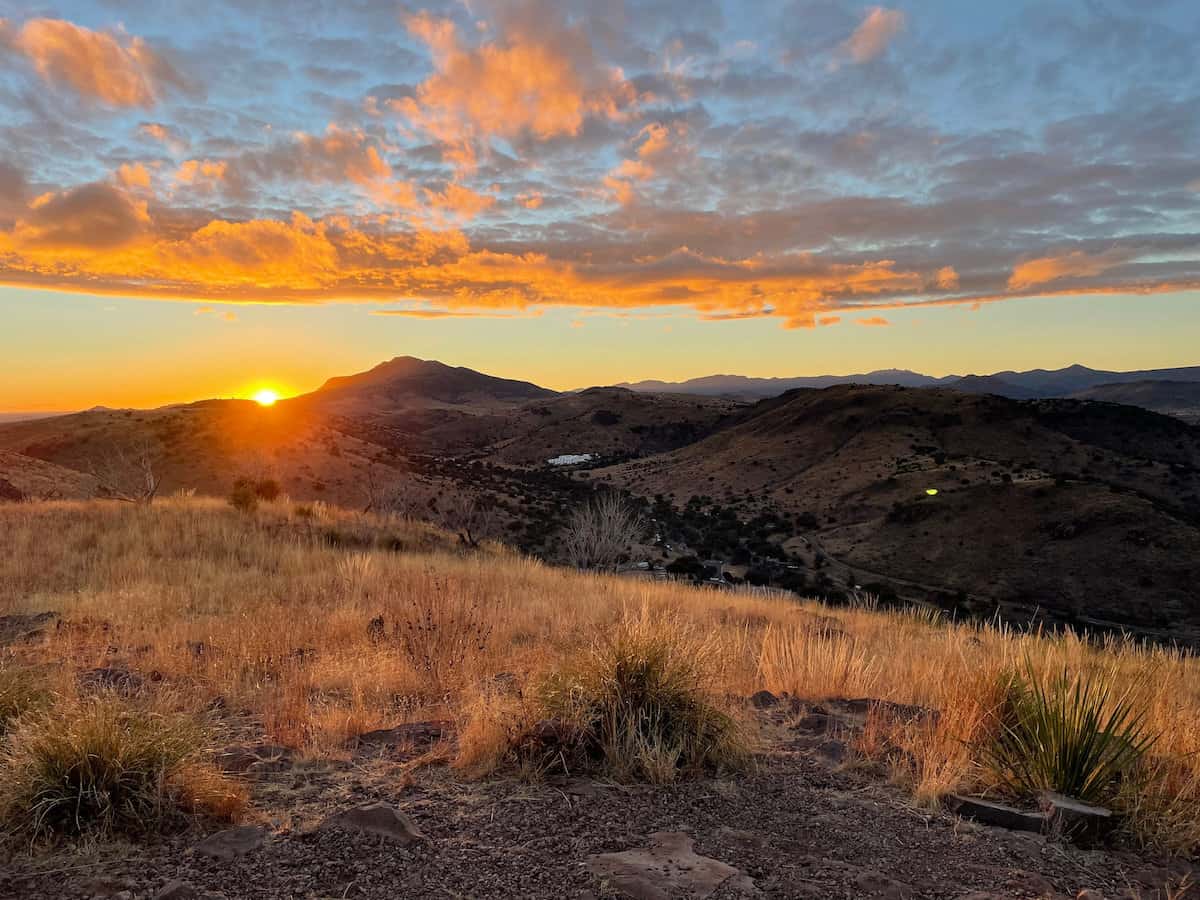
Out in West Texas, Fort Davis is a tiny mountain getaway packed with activities. South of Interstate 10, Fort Davis boasts a National Park, a state park, an observatory and lots of wide open spaces for hiking and exploring. Add scenic drives and sunsets to your trip and explore the best of the Chihuahua Desert. Here are the top things to do Fort Davis, Texas.
While in West Texas, visit Balmohrea Pool, the largest spring-fed pool in the world, located just off Interstate 10. Southwest of Fort Davis, Marfa offers a vibrant art scene. North of Interstate 10, travelers will find the Guadalupe Mountains National Park. Travelers can head further south and reach Big Bend National Park for an end-of-the-road adventure. All can be combined into a weeklong exploration of West Texas.
18 Top Things to Do in Fort Davis
-
Visit Fort Davis National Historic Site
-
Stop by the Fort Davis Visitor Center
-
Take the Self-Guided Walking Tour
-
Take a Hike at Fort Davis
-
Kids Can Earn a Junior Ranger Badge
-
Go Birding in Fort Davis
-
Learn about the People Who Lived in Fort Davis
-
Spot Wildlife in the Davis Mountains
-
Visit Davis Mountains State Park
-
See the Sunset
-
Take a Hike in the Davis Mountains
-
Learn about the Civilian Conservation Corps
-
Attend a Star Party at the McDonald Observatory
-
Stop by the Chihuahuan Desert Nature Center
-
Take the Scenic Loop Drive
-
Hike at the Davis Mountains Preserve
-
Visit the Rattlers and Reptiles Museum
-
See the Jeff Davis County Courthouse

Visit Fort Davis National Historic Site
A people moved west., the U.S. Army patrolled the area along the route to California. A fort was constructed on the site in 1854. From 1854 to 1891, Fort Davis served as a military outpost to protect emigrants, mail and freight along the Trans-Pecos section of the San Antonio-El Paso Road.
After the Civil War, Fort Davis was reinstated and expanded starting in 1867. In 1891, the fort was abandoned. In 1961 it was authorized as a National Park site.
Fort Davis National Historic Site is a well-preserved western fort in the U.S. Depending on interest, it can be explored in a few hours and is an excellent stop on the way to Big Bend National Park.
Explore the Visitor Center
Visitors can walk through the interpretive displays to learn more about the frontier life. There is also a 15-minute film available.
Take the Fort’s Self-Guided Walking Tour
Fort Davis is one of the largest and most well-preserved western forts. Ringing the parade ground, visitors can see the majority of the preserved buildings. The bugle bellows over a loudspeaker, and visitors can imagine the fort with 400 men in the late 1880s.
National Parks of Texas
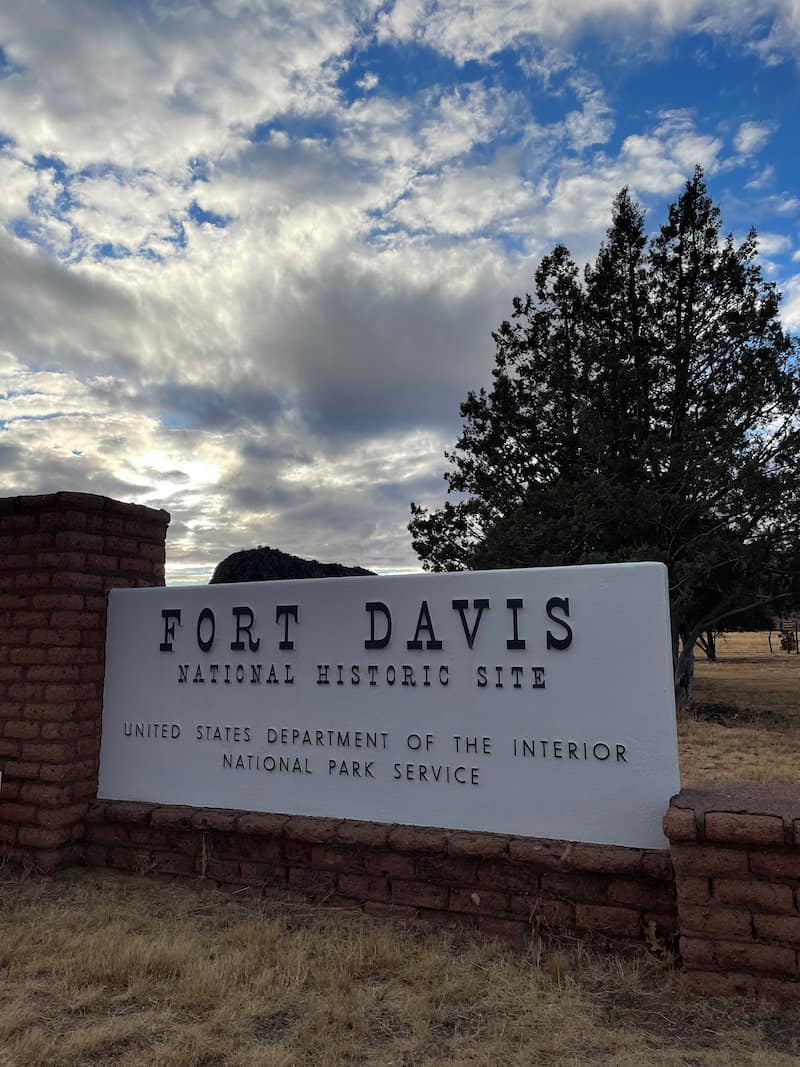
Take a Hike at Fort Davis
- Tall Grass Loop–a .8-mile (1..3km) loop
- Hospital Canyon Trail–a .7-mile (1.2 km) one-way trail
- The trail to Davis Mountains State Park–a 2.5-mile (4.0 km) one-way trail
Kids Can Earn a Junior Ranger Badge
The Junior Ranger Program is the go-to program for families to learn more about Fort Davis National Historic Site. It’s free and takes about two hours to complete. My kids love the badges that the Rangers present them after completing their booklet.
I was surprised by how engaged my boys were at the fort. At the time, they were in grade school and knew more about the era’s history than I realized. It appealed to their idea of Western adventure.
Go Birding in Fort Davis
Visitors will find a large variety of birds in the Fort Davis area, Check in with the Park Rangers for the best places to spot birds.
Special Events at Fort Davis
Check the Fort Davis National Historic Site for events, like small weapon demonstrations and holiday decorations.
Learn about the People of Fort Davis
Officers and Enlisted Soldiers
Some of the soldiers brought their families with them to Fort Davis. Officer’s Row is a line of restored housing for the officers and their families.
Fort life wasn’t as dangerous as some posts, and most of the soldiers patrolled the area instead of engaging in conflict. Much time was spent constructing infrastructure out in the West Texas town, like road building and later installing telegraph wires.
Buffalo Soldiers
Stationed throughout the southwest, units of black men served in the infantry and cavalry, as was the case for Fort Davis.
Apache, Kiowa and Comanche People
As settlement encroached on traditional lands, the Apache, Kiowa and Comanche tribes raided settlements and travelers along the San Antonio-El Paso Road.
Located at 101 Lt. Henry Flipper Drive. Open daily from 8 a.m. to 5 p.m. Adult admission is $10 for those 16 and older, free for kids 15 and under.
Planning Guide to Big Bend National Park

Visit Davis Mountains State Park
Adjoining Fort Davis National Historic Site, the Davis Mountains State Park features the Limpia Creek and the Limpia Canyon. It is also home to the Indian Lodge, a historic lodge built by the Civilian Conservation Corps.
Visitors can also see a variety of wildlife, including birds, wildflowers and native vegetation.
What to do at the Davis Mountains State Park
Spot Wildlife in the Davis Mountains
Find about 260 different varieties of birds in the Davis Mountains at different times of the year. View feeding and water station from a bird blind.
Mountain lions, javelina, along with rattlesnakes are found in the park. Please take care when hiking.
See the Sunset
For the best sunset, drive up the Skyline Drive or hike up Skyline Drive Trail to catch the sunset and see the horizon glow in a blaze. It’s the Wow moment in Fort Davis. Arrive a bit early, as parking is limited, and some park visitors arrive just for the sunset. Find two areas with scenic overlooks from high points in the park.
Take a Hike in the Davis Mountains
- Indian Lodge Trail–1.5-mile (2.4km) one-way trail
- Limpia Creek Trail–2.5-mile (4 km) one-way trail
- Skyline Drive Trail–2.6-mile (4.1) one-way trail
- Sheep Pin Canyon Loop–5.6-mile ( 9km) loop trail
Learn about the CCC
In 1923, the Texas State Parks Board began looking for a mountain park site in the Davis Mountains. However, it wasn’t until the Great Depression that local landowners donated land for its development.
During the Great Depression, President Franklin Roosevelt started several work programs. The Civilian Conservation Corps (CCC) was one of the programs. Young men between the ages of 17 and 25 got a job, uniforms, all meals and housing plus $30 a month, most they sent home to their families.
The Texas Parks and Wildlife features a lot of CCC work, including the Davis Mountains State Park. Between 1933 and 1935, the CCC Corps built the original section of the Indian Lodge with much of its furniture (at the time, only 16 rooms). They also constructed Skyline Drive, the scenic drive along with its rock overlooks.
Texas State Park Junior Ranger Program
Like the National Park Service, the Texas Parks and Wildlife offers a Junior Ranger booklet to complete. Families can inquire at the visitor center for the booklet. The program is free and takes a couple of hours to complete.
Camping at Davis Mountains State Park
Find developed sites with restrooms with showers.
- 26 RV Sites with Full Hook-ups–$25 a night
- 35 Sites with Electricity and Water– $20 a night
- 33 Sites with Water Only– $15 a night
- Hike-In sites–Require a 4-mile hike and $10 a night
Horseback Riding
There are 11 miles of equestrian trails, and campsites outfitted to accommodate horses. Davis Mountains State Park also has six equestrian campsites.
Located on Texas Highway 118 North, Park Road 3, just 5 miles from Fort Davis. Open daily and park office hours are 8 a.m. to 5 p.m. Adult admission (12+) is $6, and kids under 12 are free.
A Guide to Balmorhea Pool
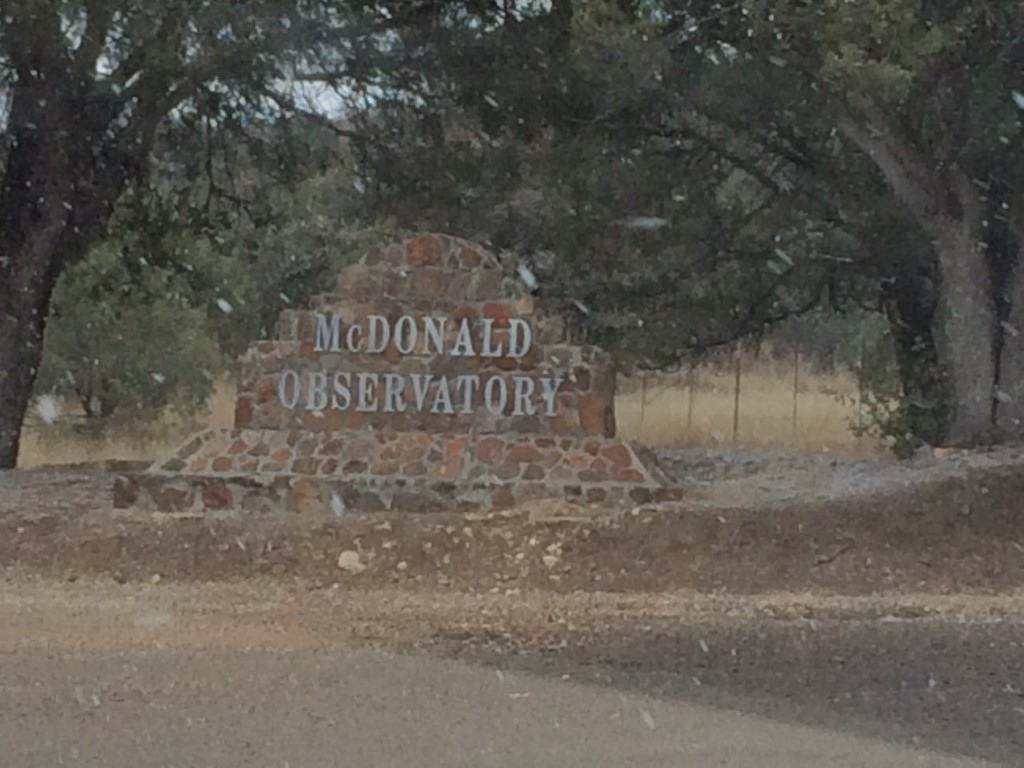
Visit the McDonald Observatory
The McDonald Observatory opened in 1933 on Mt. Locke. As a part of the University of Texas, it’s primarily a research facility. The McDonald Observatory hosts popular events, like its Star Parties, a guided tour of the night sky along with live telescopes.
Star Parties
Star Parties are held on Tuesdays, Fridays, and Saturday evenings in the outdoor Rebecca Gale Telescope Park. Participants take a guided tour of the night sky with an astronomer and then look through a selection of telescopes positioned for individual viewing.
During the star parties, visitors walk around the telescope park to see individual planets, star systems and nebula. Most telescopes will have a guide assigned to answer questions. The McDonald Observatory also provides the Wren Marcario Accessible Telescope.
When we arrived at the McDonald Observatory for one of our visits, the program was moved inside due to the weather. The astronomers offer a series of talks and demonstrations on our solar system and nearby stars.
Star Parties are popular, and reservations are necessary. They draw large crowds, especially during breaks, like winter, spring, or summer.
Visitors should dress in layers since the event is held outdoors, and temperatures are 15 degrees cooler than in Fort Davis. The telescope park is dark in the evening, so take care when walking.
In addition to the popular Star Parties, the McDonald Observatory offers a Solar Viewing Program and a guided tour of the facility.
Located at 3640 Dark Sky Drive, it’s 12 miles north on Texas Highway 118. Adult admission for the Star Parties is $25 and admission for kids (5+), students and seniors is $20. The Solar Viewing program is $5 for everyone (babies included). The guided tour is $10 for adults, $8 for seniors and students and $5 for those 4 and younger (babies included). General admission to the Visitor Center, which includes interpretive displays and a gift shop, is $3 for everyone (babies included).
Top Things to Do in Guadalupe Mountains National Park
Stop by the Chihuahuan Desert Nature Center
This 507-acre site is dedicated to the discovery of the Chihuahuan desert, one of four deserts in the U.S. Visitors can meander through the semi-arid grassland and see rock outcroppings of the Davis Mountains at the Chihuahua Desert Nature Center.
It offers hiking trails like the Modesta Canyon Trail, a 2-mile (3.2 km) loop or Clayton’s Overlook, a 1.5-mile (2.4 km) loop. The botanical garden features plants native to the Chihuahua desert, including a cactus garden and succulent greenhouse.
Located at 43899 Highway 118, 4 miles southeast of Fort Davis. Open from Monday to Saturday from 9 a.m. to 5 p.m.. Adult admission (12+) is $6.50, and kids 12 and under are free. Dog-friendly.
Take the Scenic Loop Drive
A 75-mile scenic driving route through the Davis Mountains. From Fort Davis drive west then north along Highwway 166, this will connect back with Texas Highway 188 north of Fort Davis.
Hike at the Davis Mountains Preserve
Owned and managed by the Nature Conservancy, this 33,000-acre tract preserves a sky island refuge and isolated mountain ranges that remain remote. It also protects unique animals and plants native to this area of Texas.
Madera Canyon Roadside Park
Within the boundaries of the Davis Mountains Preserve is the Madera Canyon Roadside Park. It only offers a few picnic tables though it is the trailhead for the Madera Canyon Trail, a moderate 2.4-mile roundtrip trail with an elevation change of 75 feet.
Located 25 miles northwest of Fort Davis on Highway 118. Park at the Madera Canyon Trail Parking, northwest of the McDonald Observatory. Sign-in and out at kiosk when hiking.
Visit the Rattlers and Reptiles Museum
For those travelers who want to see 100 reptiles, this is your destination.
Located at 1400 N. State St., across from the Fort Davis National Historic Site. Open daily from 10 a.m. to 6 p.m. Admission is $5.
See the Jeff Davis County Courthouse
Drive by the Beaux Arts Classical Revival courthouse in Fort Davis. Built from 1910 to 1911, it is listed on the National Register of Historic Places.
Located at 100 Court Avenue.
Top things to do in Fredericksburg
Where to Eat in Fort Davis
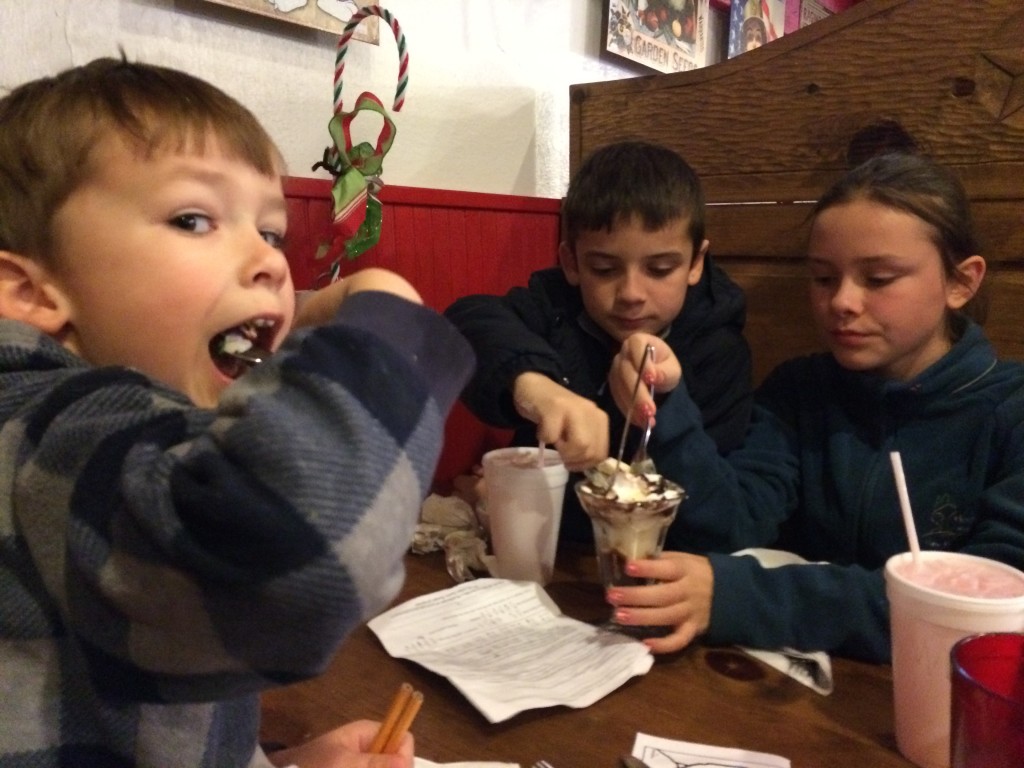
Stone Village Market
The destination for picnic provisions and takeaway food, along with a full-service deli. It features a selection of beer and wine along with coffee drinks from Big Bend Roasters. The Stone Village Market also sells groceries.
Find a motor court and camp rooms on site.
Located at 509 State St. Open daily from 7 a.m. to 7 p.m.
Where to Stay in Fort Davis
Hotel Limpia
This Victorian property was originally built in 1912 by the Union Trading Company and features covered porches and period furniture in the historic main building. In addition to the Victorian rooms, the orchard house suites were built in 1920. The property features an outdoor pool and a coffee bar.
Located at 101 Memorial Square in Fort Davis.

Indian Lodge
Note: The Indian Lodge is closed for Renovations until 2024.
The Civilian Conservation Corps (CCC) built the Indian Lodge in the 1930s. A Depression-era Works Progress program, young men developed parks across the U.S., including the National Parks and Texas State Parks.
The Indian Lodge is a 39-room hotel built of hand-hewn viga beams and white-washed adobe walls from bricks made on-site. The furniture features Southwestern motifs and is made of cedar in Bastrop State Park.
The Indian Lodge features two sections: the historic rooms and the mid-1960s addition. Thanks to a 2006 historic renovation, the original historic building and the 1967 addition blend seamlessly.
After staying at the Indian Lodge on two occasions, I prefer the original rooms. All rooms include standard amenities: air conditioning and heating, in-room coffee, hair dryer, and cable TV. Rooms also include rustic pine furniture, and some offer sitting areas and fireplaces.
The Indian Lodge offers one two-room suite and lodge rooms with two queen beds. Additionally, some rooms feature a small sitting room with a kiva fireplace and two full or king beds.
Guests will dind a seasonal pool for hotel guests. The Black Bear Restaurant serves breakfast and lunch from Wednesday to Sunday.
If you have the opportunity to visit a CCC property, DO.
Located at 16453 Park Road 3 in the Davis Mountains State Park.
Guide to Texas Swimming Holes
Where to find Texas Wildflowers
Know Before You Go
- Reservations are a must for the Indian Lodge and the Star Parties at the McDonald Observatory.
- West Texas is remote, for the largest town, Fort Stockton on Interstate 10, offers shopping, lodging and dining.
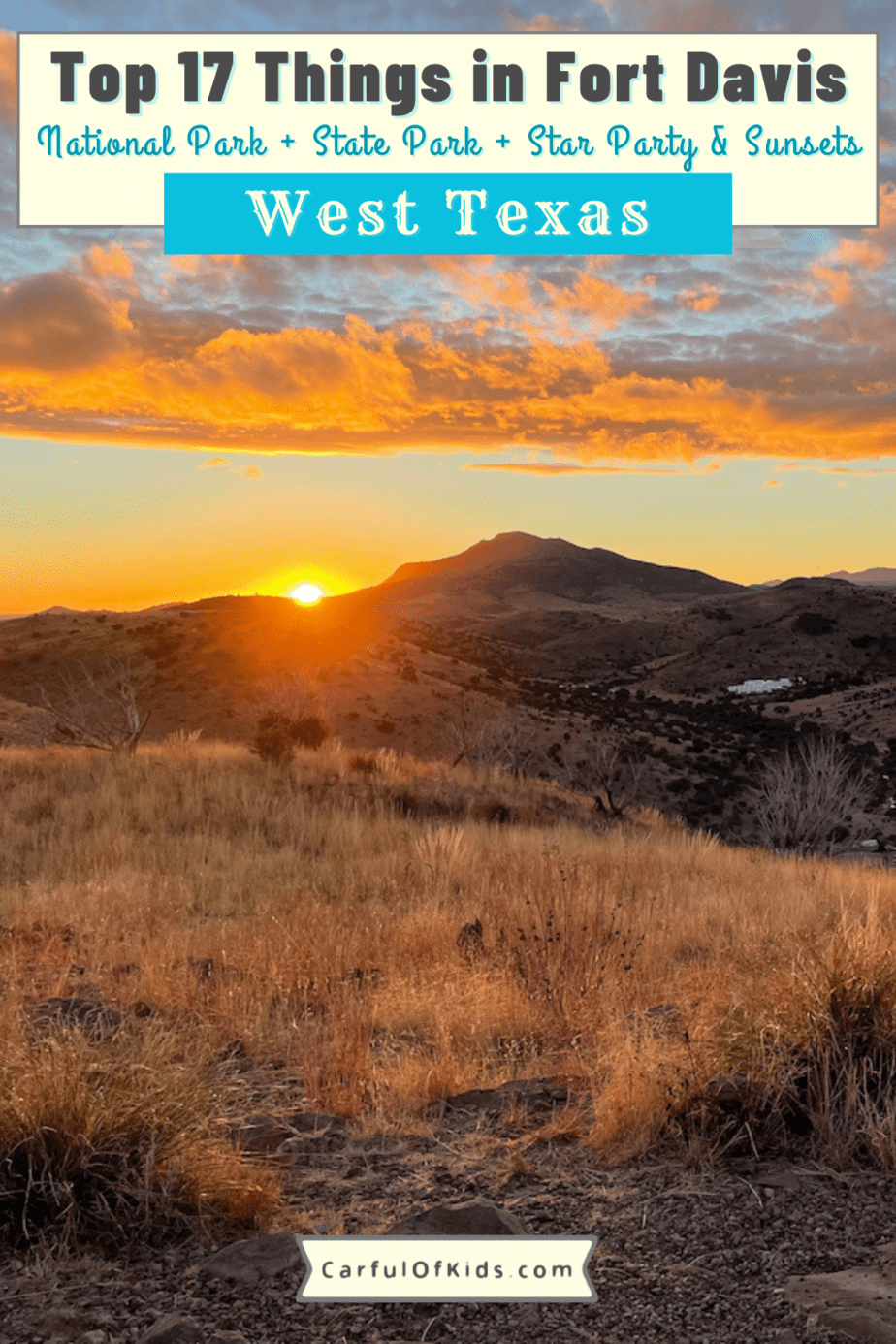


Comments are closed.